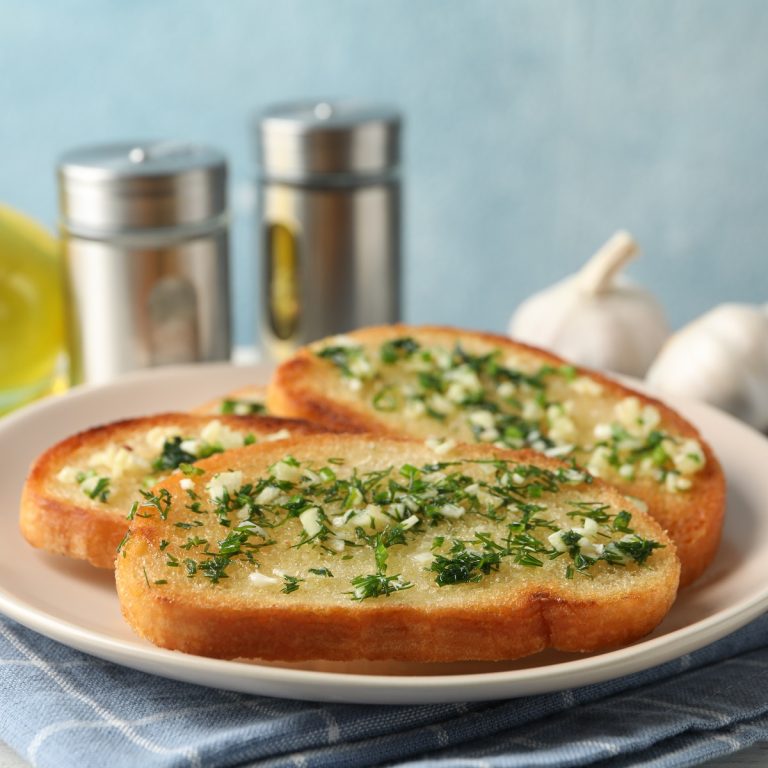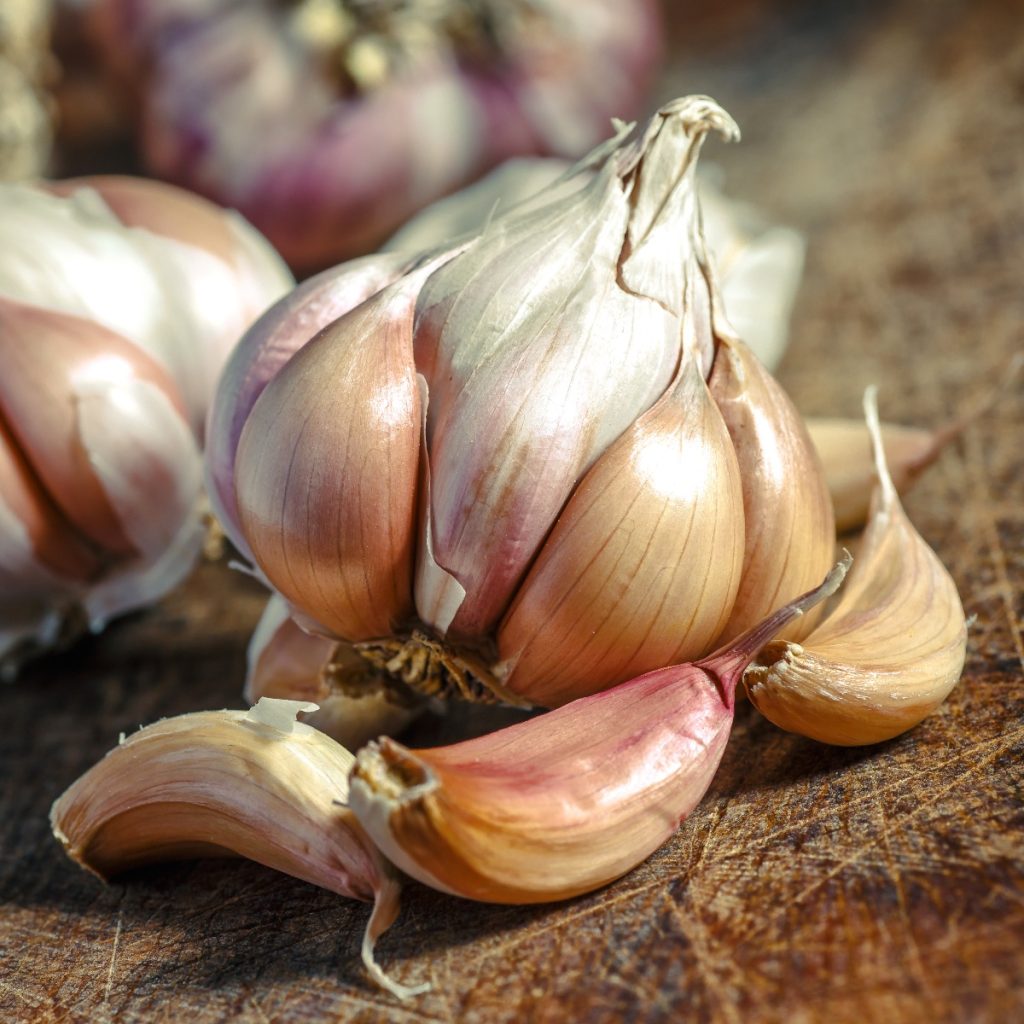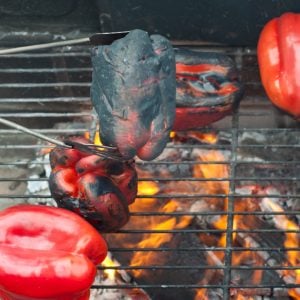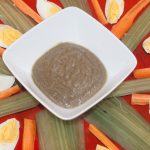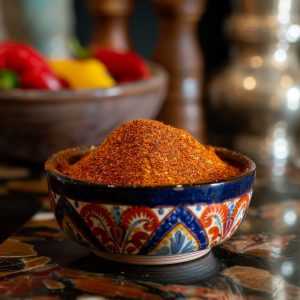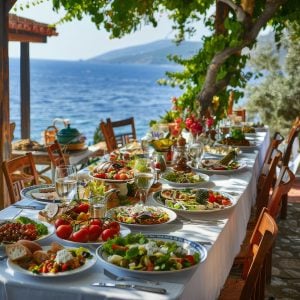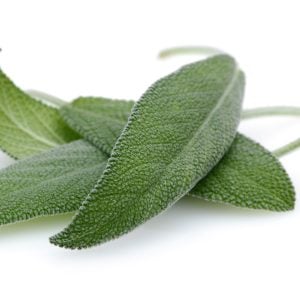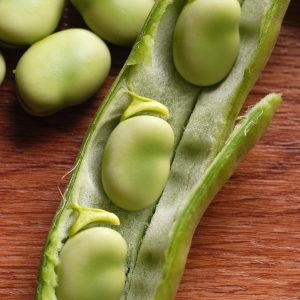The Power of Garlic: Exploring Its Many Culinary Uses
Garlic is one of the most essential ingredients in my cooking. I love what garlic does to my meals. Of course, too much may ruin a dish for some, but I have yet to have that experience.
Garlic is widely celebrated for its distinctive flavor and versatile cooking uses. This aromatic bulb has been a staple in kitchens worldwide for centuries, enhancing a wide variety of dishes. Its influence can be seen in traditional and modern recipes, where it is often added to elevate the taste profile of soups, sauces, meats, and vegetables.
In many cultures, garlic is regarded not only for its culinary contributions but also for its potential health benefits. Its medicinal properties have been valued throughout history, and its use has been passed down through generations.
Whether roasted, minced, or used whole, garlic’s strong, pungent flavor can be adapted to suit nearly any cuisine. Its popularity is undeniable, as it is found in countless kitchens, often described as a necessary ingredient in creating mouthwatering dishes.
The process by which garlic is prepared and cooked can significantly influence its flavor intensity, making it a versatile ingredient that can range from subtle to bold. As a beloved member of the allium family, garlic plays an essential role in kitchens worldwide.
Step-by-Step: How to Prep Garlic for Cooking
Separate the Cloves
Break off as many cloves as you need from the garlic bulb by pressing down gently with your palm.Trim the Ends
Use a sharp knife to cut off the root end of each clove.Peel the Garlic
Place the clove under the flat side of your knife.
Press down gently but firmly until you hear a slight crunch.
The skin will loosen and easily peel off.
Slice the Clove in Half (Lengthwise)
This exposes the germ—the greenish sprout in the center of the clove.Remove the Germ
Use the tip of your knife to lift out the germ.
The germ can taste bitter, especially in raw or lightly cooked dishes.
Choose Your Prep Method Based on the Recipe
Sliced – Milder flavor, great for sautéing.
Minced – Stronger flavor, used in sauces and dressings.
Crushed or Mashed – Intense and pungent, ideal for marinades or garlic bread.
Whole – Mild and aromatic, often used in roasts or soups.
Use Immediately
Garlic loses its potency once cut, so it’s best to use it soon after prepping.
Roasted Garlic
Ingredients
- 1 head garlic
- 2 teaspoons olive oil
Instructions
- Preheat the oven to 400°F (200°C).
- Peel off any loose papery layers of the garlic bulb, but keep the head intact.
- Cut off the top of the garlic bulb, exposing the cloves inside.
- Drizzle olive oil over the exposed cloves, covering them evenly
- Wrap the garlic bulb tightly in aluminum foil.
- Place the wrapped garlic bulb in a baking dish or on a baking sheet.
- Roast the garlic in the preheated oven for 30-40 minutes or until the cloves are soft and caramelized.
- Remove the garlic from the oven and let it cool for a few minutes.
- Squeeze the roasted cloves from the papery skin and use them as desired.
Notes
Cooking Tips When Working With Garlic
| Tip | Details |
|---|---|
| Use Fresh Garlic | Fresh garlic has the best flavor. Avoid pre-minced or jarred garlic for most dishes, as it can taste bitter or metallic. |
| Adjust Cut to Flavor | Whole cloves offer mild flavor, sliced garlic adds medium intensity, and minced or grated garlic releases the strongest punch. |
| Don’t Burn It | Garlic cooks quickly and can turn bitter when browned. Sauté it gently over low to medium heat and add it after other ingredients if needed. |
| Infuse Oil | Simmer garlic cloves in oil to create a garlic-infused base for pastas, dressings, or sautés without overpowering sharpness. |
| Roast for Sweetness | Roasting garlic transforms its flavor into something sweet and mellow—perfect for spreads, sauces, or adding to mashed potatoes. |
| Use Garlic Paste | Smash minced garlic with a pinch of salt into a paste for even distribution in marinades, dressings, or rubs. |
| Degerm for Subtlety | Removing the green germ inside the clove helps reduce bitterness, especially in raw applications. |
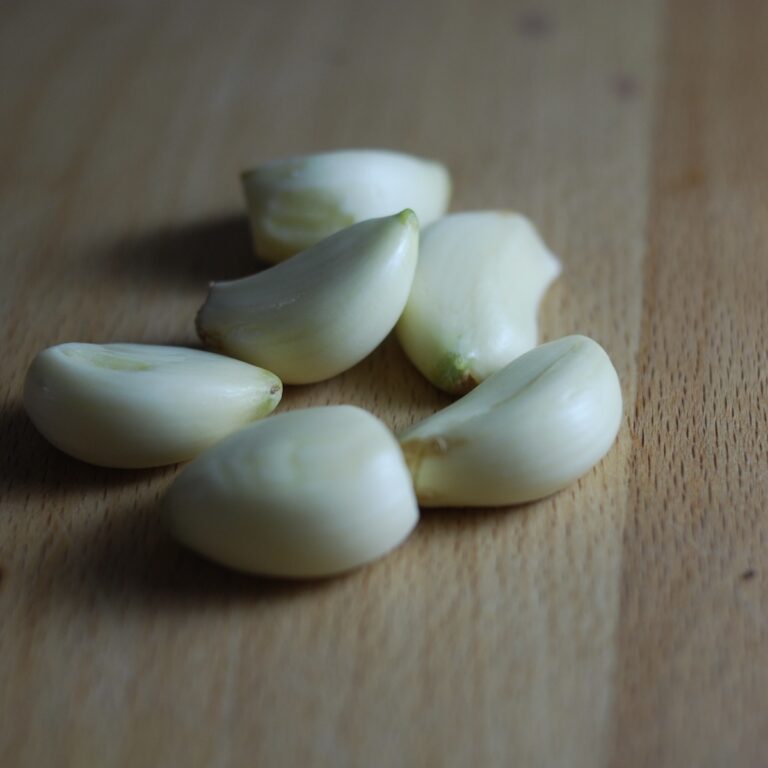
Types of Garlic & How Best Used
There are many different types of garlic, each with its distinct flavor and aroma. The various types of garlic offer a range of flavors and aromas that can be used to enhance a diverse array of dishes.
So, whether you prefer a mild, sweet flavor or a bold, spicy taste, there is a type of garlic that is sure to suit your taste. Here are some of the most common types of garlic:
| Name | Description | Best Used In |
|---|---|---|
| Softneck Garlic | The most common type with a soft, pliable stem. Mild flavor and long storage life. | Everyday cooking, roasting, braising, garlic powder, or braids for storage. |
| Hardneck Garlic | Rare with a hard, woody stem. Offers a rich, complex flavor. | Gourmet dishes, fresh use, or recipes where garlic is a primary flavor. |
| Elephant Garlic | Large bulbs, mild and sweet flavor. Often mistaken for an onion. | Roasts, stews, grilling, and recipes that need gentle garlic flavor. |
| Rocambole Garlic | A hardneck variety with bold, spicy flavor and a strong aroma. | Spicy dishes, sauces, marinades, or anywhere assertive garlic is desired. |
| Purple Stripe Garlic | Hardneck garlic with beautiful purple skins and rich, spicy flavor. | Mediterranean and Middle Eastern cooking, grilling, and baking. |
| Silverskin Garlic | A softneck garlic with small, white cloves and very long shelf life. | Pickling, preserving, or storage for extended use. |
| Creole Garlic | Softneck variety native to southern U.S. with a bold, spicy flavor. | Cajun and Creole dishes, gumbo, jambalaya, and bold-flavored recipes. |
| Asiatic Garlic | A hardneck garlic with a robust, spicy flavor. Found in Asian regions. | Stir-fries, Asian soups, sauces, and quick-cook dishes. |
| Turban Garlic | Hardneck variety with a distinctive turban-like shape and mild flavor. | Indian and Middle Eastern cooking, quick sautés, and curry bases. |
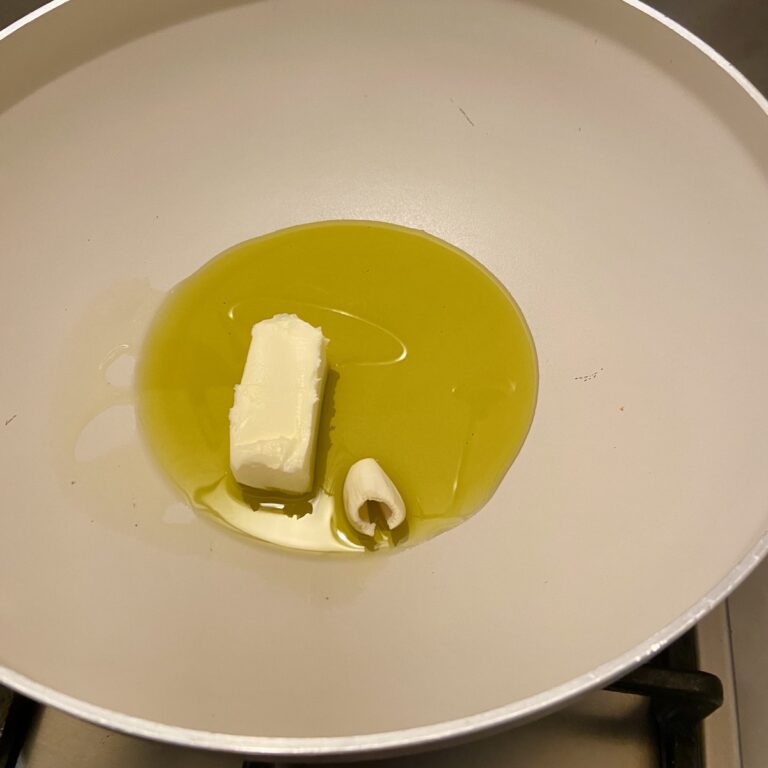
Popular Recipes Featuring Garlic
| Dish | Description | Wine Pairing |
|---|---|---|
| Garlic Shrimp (Gambas al Ajillo) | Sautéed shrimp in olive oil with sliced garlic and chili flakes, often served as a Spanish tapa. | Albariño or Sauvignon Blanc — bright acidity complements the garlic and spice. |
| Chicken with 40 Cloves of Garlic | Classic French dish where whole garlic cloves roast with chicken until sweet and tender. | Chardonnay — creamy texture pairs well with roasted garlic and savory chicken. |
| Garlic Confit | Slow-cooked garlic cloves in olive oil until soft, mellow, and spreadable. | Pinot Gris or a light Rosé — subtle fruit balances the rich, sweet garlic. |
| Spaghetti Garlic & Oil | Simple Italian pasta dish with garlic, olive oil, and red pepper flakes. | Verdicchio or Pinot Grigio — clean, crisp wines to cut through the oil and garlic. |
| Garlic Butter Steak | Pan-seared steak basted with garlic-infused butter for deep flavor. | Cabernet Sauvignon or Syrah — bold reds stand up to the richness and garlic intensity. |
| Garlic Mashed Potatoes | Classic mashed potatoes blended with roasted or sautéed garlic. | Chenin Blanc or White Rhône blend — structured whites with some weight match the creaminess. |
| Garlic Naan | Indian flatbread topped with minced garlic and fresh herbs, often served with curries. | Gewürztraminer or off-dry Riesling — aromatic and slightly sweet wines balance the spice and garlic. |
Bagna Cauda
Ingredients
- 1 head garlic separated into cloves and peeled
- 10 each anchovy fillets chopped
- ½ cup olive oil extra virgin
- ½ cup butter unsalted
- raw vegetables carrots, celery, fennel, radicchio for dipping
- bread for serving
Instructions
- Combine the garlic, anchovies, olive oil, and butter in a small saucepan.
- Cook the mixture over low heat, stirring occasionally, until the garlic is soft and fragrant and the anchovies have melted into the oil and butter, about 15-20 minutes.
- Remove the pan from the heat and let the mixture cool slightly.
- Arrange the raw vegetables on a platter.
- Pour the bagna cauda into a fondue pot or other small, warm serving vessel and place it in the center of the platter.
- Serve the bagna cauda with the vegetables and bread for dipping.
Notes
Where Does Garlic Come From?
Garlic is native to Central Asia and has been cultivated for over 5,000 years. It was widely used in ancient Egypt, where it was given to workers to improve their strength and endurance.
In ancient Greece, garlic was used to treat various ailments, including digestive disorders, respiratory infections, and fatigue. The ancient Romans also believed in its health benefits, and soldiers were often given garlic to prevent infections and promote healing.
Today, garlic is grown in many parts of the world and is an essential ingredient in many cuisines, including Italian, French, and Asian. It is used in soups, stews, sauces, and marinades.
It can also be roasted, sautéed, or grilled to bring out its unique flavor. Garlic is also commonly used in pickling and preserving foods like olives and cucumbers.
Health Benefits
| Health Benefit | Description |
|---|---|
| Boosts Immune System | Garlic contains compounds like allicin that enhance the immune response and help fight colds and infections. |
| Reduces Blood Pressure | Studies show garlic can help lower high blood pressure, supporting heart health and reducing the risk of stroke. |
| Lowers Cholesterol | Garlic has been shown to reduce total and LDL (bad) cholesterol levels, improving cardiovascular health. |
| Anti-Inflammatory Effects | Garlic's antioxidants and sulfur compounds help reduce inflammation in the body, which is linked to many chronic diseases. |
| Rich in Antioxidants | Garlic supports the body’s defense against oxidative damage, promoting overall cellular health and longevity. |
| Supports Detoxification | Garlic helps the liver activate detox enzymes and flush out heavy metals and toxins from the body. |
| Improves Digestion | Garlic can stimulate digestive enzymes and promote healthy gut bacteria, aiding in better digestion. |
| May Improve Bone Health | Some research suggests garlic may boost estrogen levels in women, potentially improving bone density. |
What Is Garlic’s History?
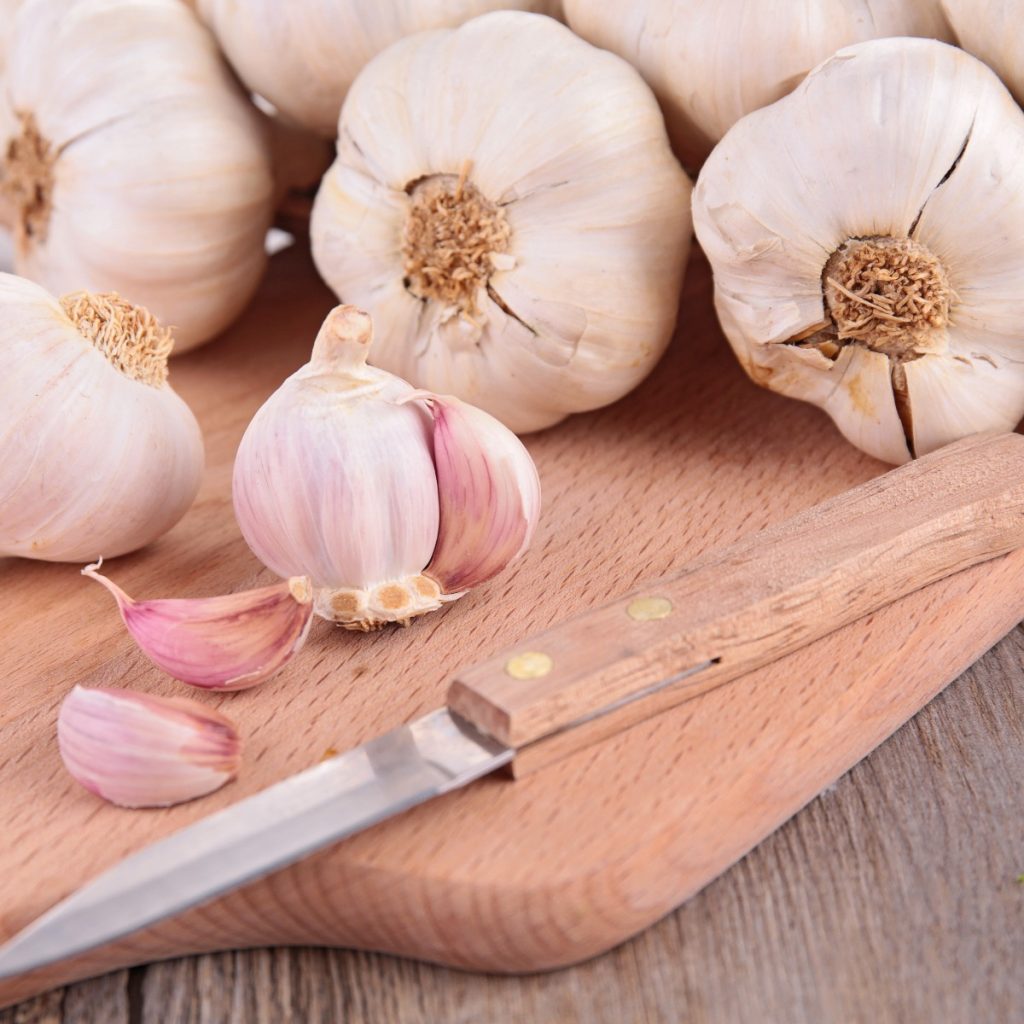
Garlic has a rich and fascinating history that dates back thousands of years. As mentioned above, it is believed to have originated in Central Asia and was first cultivated in ancient Mesopotamia, which is now modern-day Iraq. From there, it spread to Egypt, India, and China, where it was highly prized for its medicinal properties.
Garlic was also highly valued in ancient Greece and Rome. For example, the Greek physician Hippocrates, the father of modern medicine, recommended garlic for various ailments, including respiratory problems, parasites, and poor digestion.
The Roman writer Pliny the Elder also extolled the virtues of garlic in his writings, and Roman soldiers used it as a remedy for infections and wounds.
In medieval Europe, garlic was believed to have protective powers against evil spirits. It was often hung above doorways to ward off evil. Garlic was also believed to have medicinal properties and was used to treat various ailments, including coughs, colds, and digestive problems.
Spanish and Portuguese explorers brought garlic to the Americas in the 16th century. It quickly became popular in the New World and was used by Native Americans for culinary and medicinal purposes.
In modern times, garlic has become a staple ingredient in many cuisines worldwide. It is used in dishes such as pasta, stir-fries, soups, and stews and as a flavoring in sauces and marinades.
Garlic is also used in traditional medicine in many cultures, including Ayurvedic medicine in India and Traditional Chinese Medicine.
Today, garlic is grown in many parts of the world, with China being the largest producer. It is also widely available in various forms, including fresh garlic, garlic powder, and garlic supplements.
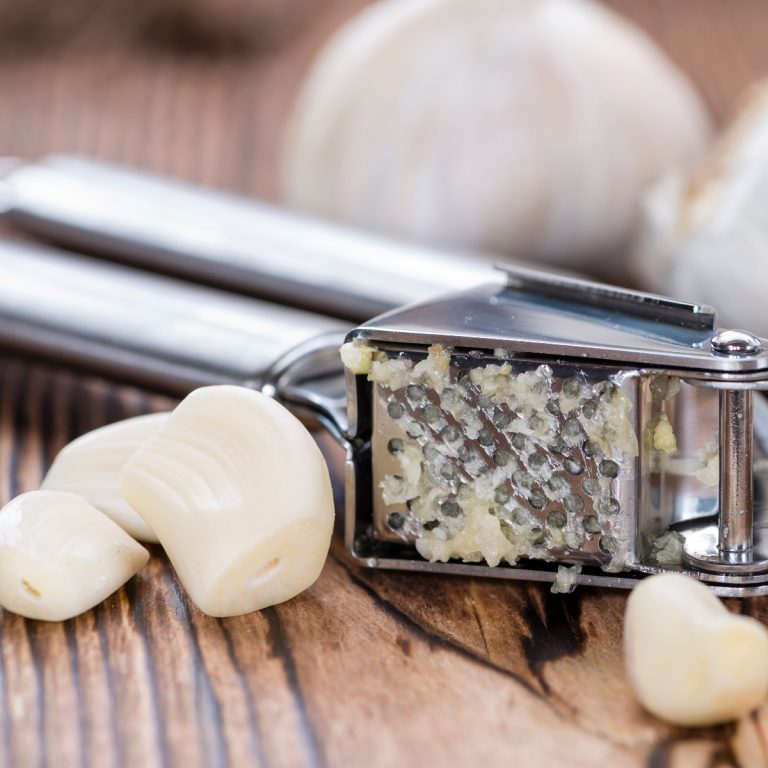
What Does Garlic Taste Like?
Garlic has a bold, sharp, and savory flavor when raw. It tastes pungent and slightly spicy, with a strong bite that can tingle your tongue—somewhat like a cross between an onion and mustard. When cooked, garlic softens and sweetens. It becomes rich, mellow, and almost buttery with a warm, nutty taste. Roasted garlic, in particular, is smooth, slightly sweet, and spreadable—like a savory jam with a hint of smokiness.
In terms of comparison, garlic is most similar to onion in flavor, but it’s stronger and more concentrated. Think of garlic as onion’s more intense, fiery cousin. Its taste is truly unique, though—no other ingredient brings the same depth and warmth to savory dishes.
Which Is Stronger, Finely Minced or Sliced Garlic?
Regarding the strength of garlic, the preparation method can impact the flavor’s intensity. Generally, minced garlic is more potent than sliced garlic because it releases more of the garlic’s volatile compounds, which give it its pungent flavor and aroma.
When garlic is minced, the cells are ruptured, releasing more sulfur-containing compounds that give garlic its characteristic taste and smell. The finer the garlic is minced, the more these compounds are released, making the garlic taste more intense.
On the other hand, sliced garlic may not release as many of these compounds because the cells are not as damaged as they are when the garlic is minced. However, the larger surface area of the slices can still impart a strong garlic flavor if cooked for a longer period.
Ultimately, the choice between minced and sliced garlic depends on personal preference and the specific recipe. For example, if you want a strong garlic flavor, you may opt for minced garlic, while sliced garlic may be a better choice if you want a milder garlic taste.
Roasting It Whole
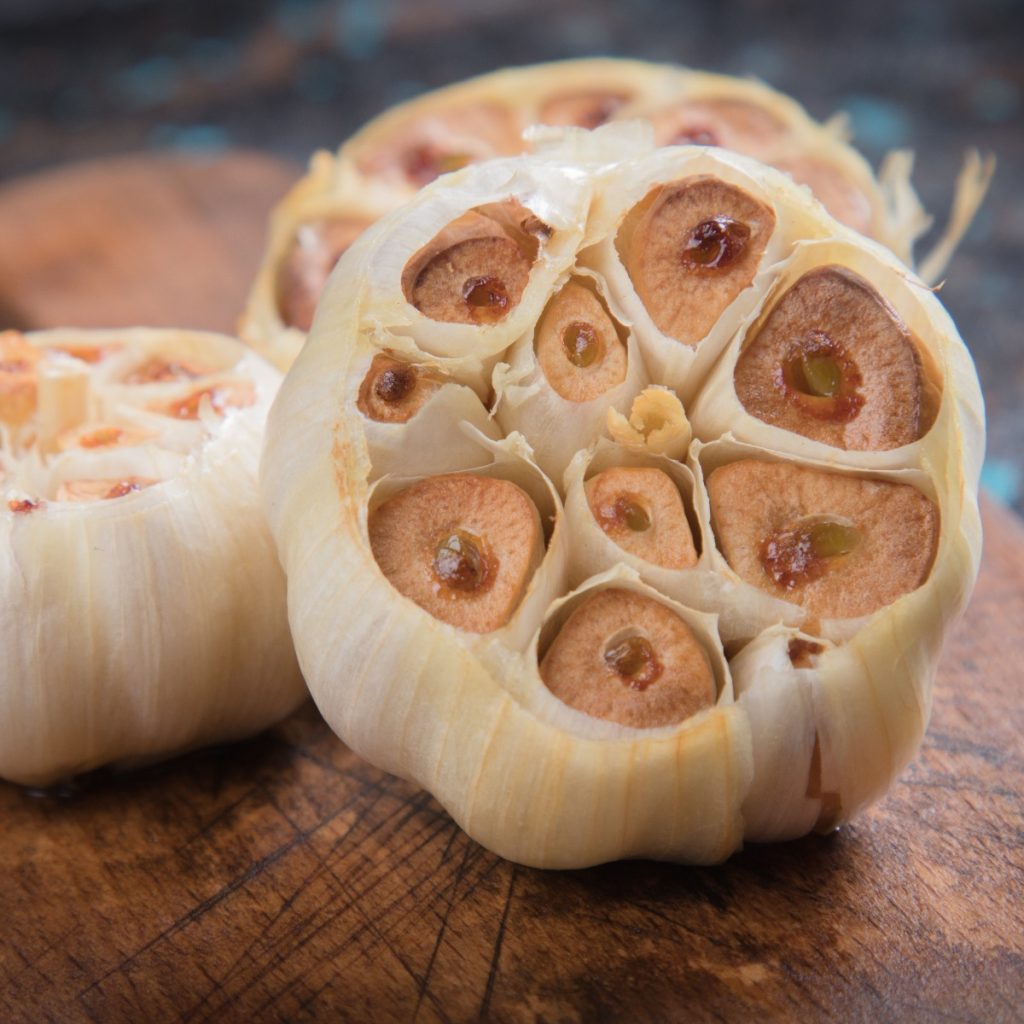
Roasting whole garlic is a popular cooking technique many chefs and home cooks use. However, for several reasons, chefs might roast it in its entirety rather than chopping or mincing it.
First, roasting whole garlic mellows the flavor and removes some of the harshnesses that raw garlic can have. The roasting process caramelizes the natural sugars in the garlic, giving it a slightly sweet and nutty flavor that complements many dishes.
Second, roasted garlic is incredibly versatile and can be used in various dishes. Once the garlic is roasted, it can be easily squeezed out of its papery skin and used as a spread on bread or as an ingredient in sauces, soups, and other dishes.
Also, roasting whole garlic is a simple and low-maintenance cooking technique that requires little effort from the chef. To roast garlic, all you need to do is cut off the top of the garlic bulb, drizzle it with a bit of oil, and roast it in the oven until it is tender and fragrant. The roasted garlic can then be stored in the refrigerator for several days or frozen for later use.
Roasting whole garlic is a delicious and easy way to add flavor and depth to your cooking. Whether you’re making simple garlic bread or a complex sauce, roasted garlic can add a rich and nuanced flavor that will impress.
How Did Garlic Arrive in Italy and Why Is It Used So Much in Italian Cuisine?
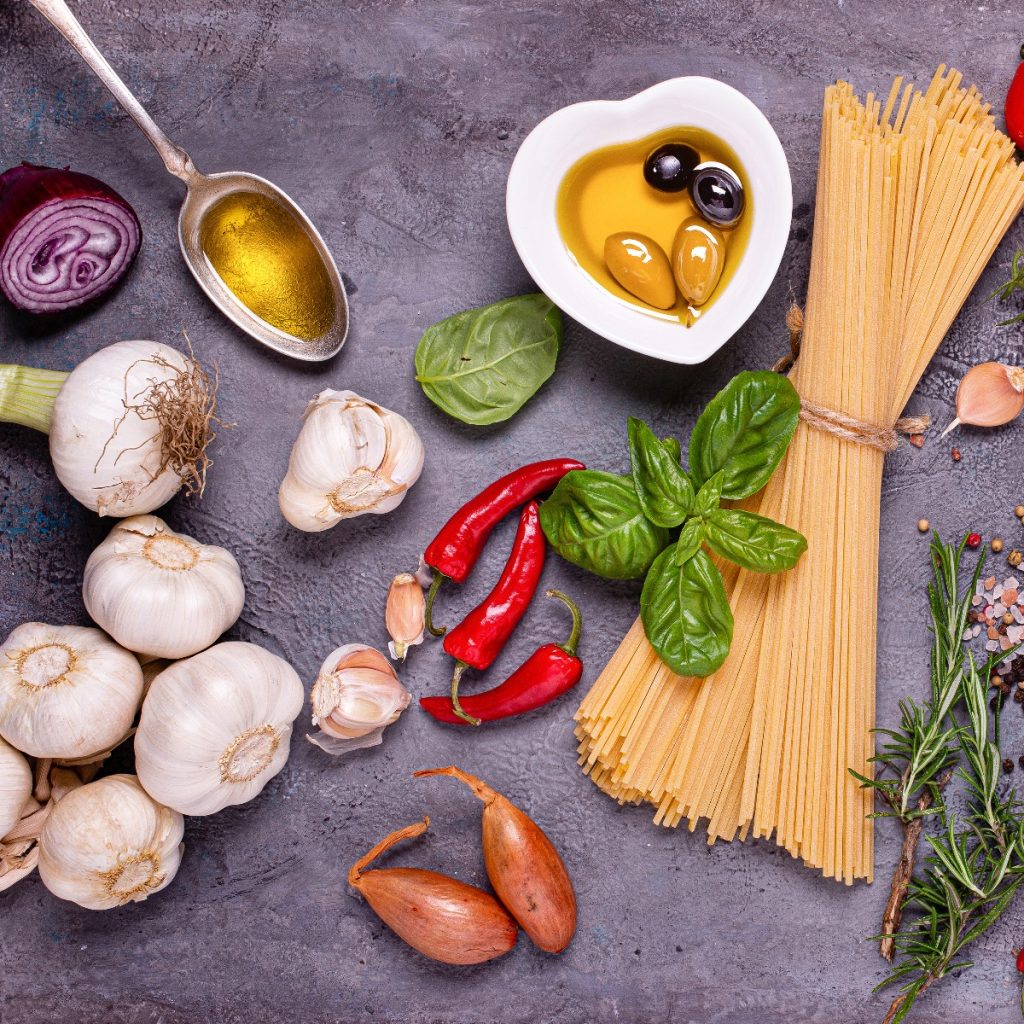
Garlic was likely introduced to Italy by the ancient Greeks, who colonized southern Italy in the 8th century BC. It is believed that the Greeks brought garlic from Asia and introduced it to the region. Garlic quickly became popular in Italy and has been used in Italian cuisine for thousands of years.
Garlic is used extensively in Italian cuisine because it adds a unique flavor and aroma. It is often used as a base flavoring in Italian sauces, such as marinara sauce and pesto. It is also used in Italian soups, stews, and roasted dishes, such as roasted chicken and vegetables.
One of the most famous Italian dishes that use garlic is spaghetti aglio e olio, which translates to “spaghetti with garlic and oil.” This simple yet flavorful dish is made by sautéing garlic in olive oil and then tossing it with cooked spaghetti, red pepper flakes, and parsley.
In addition to its culinary uses, garlic has been used in traditional Italian medicine for centuries. It was believed to have numerous health benefits and was used to treat various ailments, including colds, flu, and digestive problems.
Today, garlic is widely recognized for its health benefits, including its ability to lower cholesterol, reduce blood pressure, and boost the immune system.
For thousands of years, garlic has played an important role in Italian cuisine and culture. Its unique flavor and health benefits make it a versatile and indispensable ingredient in Italian cooking, and it continues to be a beloved and widely used ingredient.
Some Garlic Trivia
Five Fun Facts About Garlic?
- Garlic has been used for thousands of years for culinary and medicinal purposes. In ancient times, garlic was believed to have healing powers and was used to treat various ailments, including infections, digestive problems, and even snake bites.
- Garlic is an onion family member, along with onions, shallots, leeks, and chives. It is classified as an herb and is grown and used all over the world.
- Garlic can be used as a natural pesticide to repel certain insects. However, it contains toxic compounds to some insects, including mosquitoes, ticks, and aphids.
- Garlic is believed to have many health benefits, including reducing the risk of heart disease, lowering cholesterol levels, and boosting the immune system. Some studies have also shown that garlic may have anti-cancer properties.
- Garlic is a staple ingredient in many world cuisines, including Italian, French, Chinese, and Indian. It is used in various dishes, from simple pasta sauces to complex curries, and is often paired with other intense flavors like ginger, chili peppers, and tomatoes.
Can You Cook Garlic with the Peel On?
It is possible to cook garlic with the peel on, but it is only sometimes recommended. Cooking garlic with the peel on can create a different flavor profile and make removing the garlic from the dish easier after cooking.
One standard method of cooking garlic with the peel on is to roast it in the oven. Another way to cook garlic with the peel on is to sauté it in a pan with other ingredients. Add whole garlic cloves to the pan with other ingredients, and cook until the garlic is soft and aromatic. Once the garlic is cooked, remove the cloves from the pan and discard the peel.
Cooking garlic with peel on can change the flavor profile in several ways. Firstly, the peel can protect the garlic from direct heat, which can help prevent it from burning or becoming bitter. This can result in a milder, sweeter flavor profile, as opposed to the stronger, more pungent flavor that can result from cooking peeled garlic.
Additionally, cooking garlic with the peel on can infuse the dish with a subtle, smoky flavor, as the heat of the cooking process can cause the oils in the garlic to become more concentrated and aromatic. This can add depth and complexity to the dish and work well in savory or earthy dishes like stews, roasted meats, and vegetables.
How Did It Get Associated with Vampires?
The association of garlic with vampires can be traced back to ancient folklore and superstitions. In many cultures, garlic was believed to have protective properties against evil spirits and was often hung above doorways or worn as a talisman to ward off evil.
In medieval Europe, garlic was believed to have magical properties and was often used in spells and charms to protect against witches and demons. It was also believed to have the power to repel vampires and other supernatural creatures.
The link between garlic and vampires became particularly strong in the 19th century with the publication of Bram Stoker’s novel “Dracula.”
In the novel, the protagonist Van Helsing uses garlic to ward off Dracula and his vampire minions. This portrayal of garlic as a weapon against vampires helped cement its association with these creatures in popular culture.
Garlic became common in vampire lore and popular culture in the following years. In movies, TV shows, and other media, garlic is often used as a weapon against vampires and is sometimes depicted as having the power to repel or destroy them.
Today, the association of garlic with vampires is mainly seen as a cultural trope and a popular Halloween theme. While there is no scientific evidence to suggest that garlic has any effect on vampires or other supernatural creatures, its use in vampire folklore and popular culture has helped to cement its place in the cultural imagination.

What Was the Garlic Scene in the Movie Big Night?
“Big Night” is a 1996 American comedy-drama film about two Italian brothers who own a struggling restaurant in 1950s New Jersey. Garlic is a crucial ingredient in many Italian dishes, and it features prominently in one memorable scene in the film.
In the scene, Primo (played by Tony Shalhoub) is a chef passionate about authentic Italian cuisine. He is making a risotto dish and insists on adding a whole head of garlic to the pot, despite the objections of his brother Secondo (played by Stanley Tucci) and their restaurant partner, Pascal (played by Ian Holm). The garlic is meant to infuse the dish with flavor, but it also makes the restaurant smell strongly of garlic, turning off some customers.
Later in the film, a rival Italian restaurant owner named Cristiano (played by Marc Anthony) comes to the brothers’ restaurant for a meal. Cristiano is impressed by the food and compliments Primo on the risotto, saying he can taste the garlic in the back of his head. Primo is pleased by the compliment and explains that garlic is the secret to the dish.
The scene is a testament to the importance of garlic in Italian cuisine and highlights the clash between tradition and innovation in the restaurant industry. Primo insists on using authentic, traditional ingredients in his cooking, even if it means turning off some customers.
Conversely, Secondo is more concerned with business and wants to cater to American tastes. Ultimately, the two brothers must find a way to balance their differing perspectives to save their struggling restaurant.
Did You Know Garlic Is A Natural Bug Repellent
In addition to its health benefits, garlic is also a natural insect repellent. It can be used to repel mosquitoes, ticks, and other insects. It can be crushed and mixed with water to create a spray applied to skin or clothing. It can also be planted in gardens to repel pests such as aphids and slugs.
